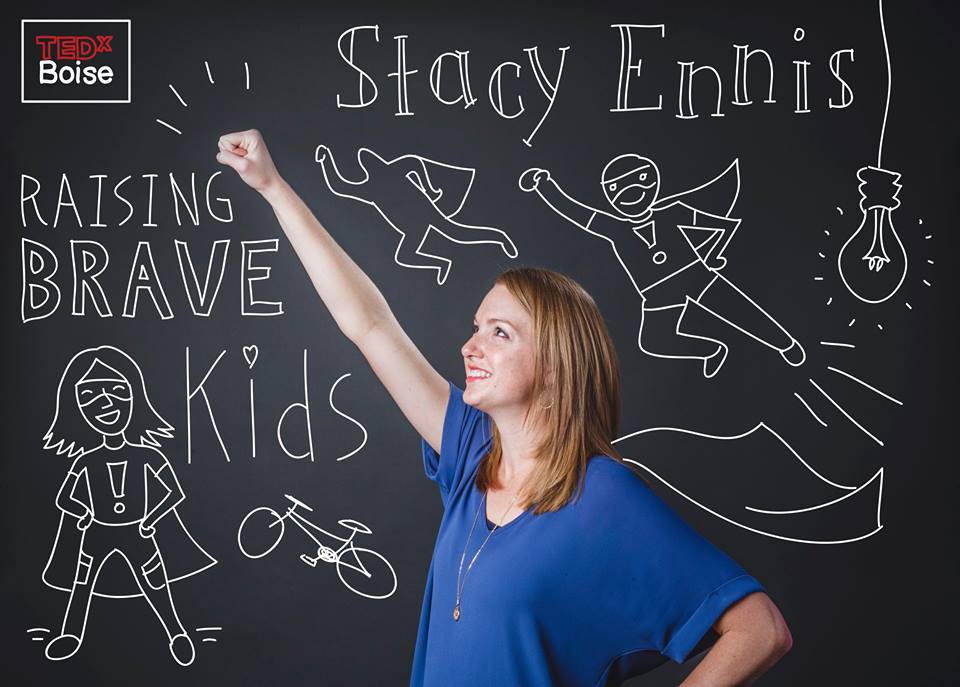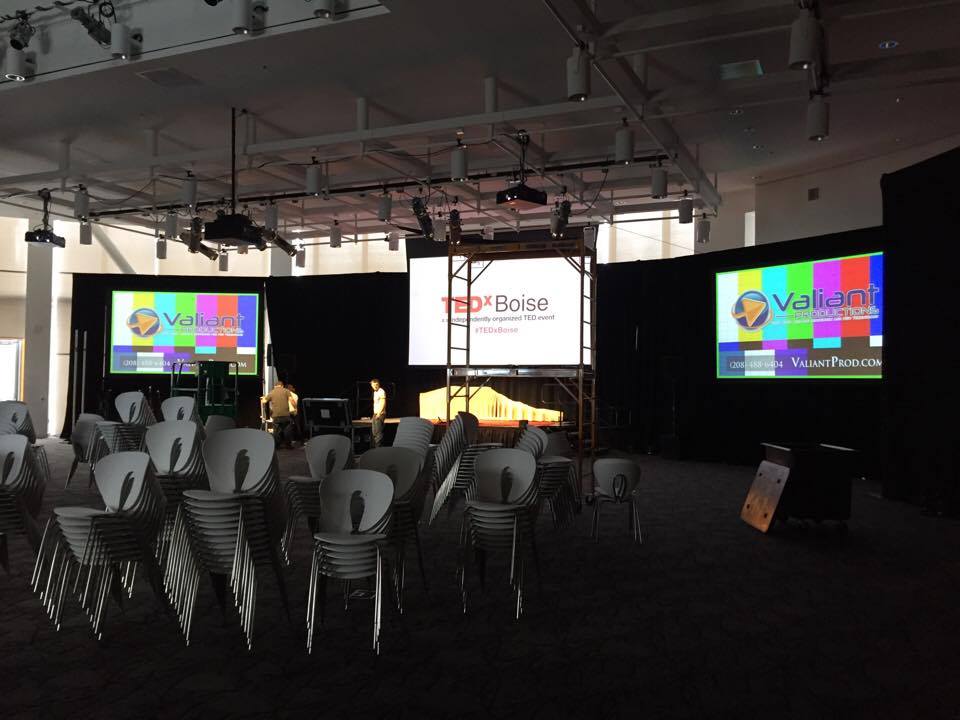I’ve been watching TED talks for years. During the early months of my company, I started every morning by watching a TED talk as I ate breakfast.
It’s possible that I see TED a little differently than some, that I’ve developed a reverence not shared by the general population. I know from more than a decade of writing just how difficult it is to distill a big concept into a clear, repeatable idea. Clarity of TED proportion requires painstaking editing—a willingness to cut, rework, and refine until it’s just right.
Simplicity is perhaps the hardest thing to learn as a writer. And at the foundation of every TED talk is great content—great writing. But that’s just one aspect of a TED talk. The delivery is just as important as the writing.
All of this is to say: I love TED talks, and it was a goal of mine to give one at some point in my life. I knew the process would stretch me in a new way, that I’d learn and grow.
If you’ve been following my work, you might know that I was rejected for TEDx the first time I applied. It was disheartening but deserved. My pitch wasn’t great. And if I’m being really honest, it was self-serving.
So, after my long road to TEDx—years of studying TED talks, rejection, attending an informational session, seeking pitch advice from the TEDx selection committee—I was elated to be selected. And that’s where the hard work started.
When you’re selected to give a TEDx talk, or at least a TEDxBoise talk, they give you a rundown of what’s expected:
- Agree to the TED commandments and sign several forms that stipulate what you can and can’t do as a TEDx speaker.
- Commit to deadlines. The organizers are strict about when to send your title, talk description, talk draft, slides, and more.
- Attend speaking coaching sessions. We were provided five individual coaching sessions, ninety minutes each. Sessions weren’t a requirement but they were highly encouraged.
- Attend rehearsals (one required, two optional). We had lots of opportunities to practice, and I took full advantage of these.
In total, we had six months to prepare our talks. My talk was titled, “How to raise brave kids.” Here’s what my timeline looked like.
Months 1 and 2 – Research, note taking, ideation
The first months were spent pulling together social science and developing the bones of my talk. This was on top of nearly a decade of intentionally developing bravery in my own life and more than a year reading about, and developing my thinking around, raising brave kids. My first coaching session was spent discussing my writing process and beginning to develop some of the physical qualities I knew I wanted to bring to the stage. For example, posture and energy were two areas of focus, so my coach, Nancy Buffington, gave me exercises to do at home with my kids. Perfect, right?
Month 3 – Writing the long draft
After I “completed” my research—I use quotes because it’s never really done, is it?—I put together a long version of my talk. I shared it with Nancy knowing it wasn’t anywhere near where I wanted it to be. During our next coaching session, we talked through a new approach. I was spending way too much time on the science and not enough time on the key points. Basically, I was trying to take people on the entire journey rather than sharing what was most important for them to understand. My task was to distill the talk.
Around this time, we went in for head shots. Mine resulted in this beautiful graphic for my talk.
Month 4 – Revising the draft
I reworked my talk substantially but it still wasn’t there. It was missing the arch I knew it needed—a clear intro, middle, and conclusion that brought the listener along on the journey with me. It lacked flow, cadence, and a through line that connected everything together. And most importantly, the idea wasn’t crisp, clear, and memorable.
I realized at this point that I was too married to my pitch—the short description I’d written to apply to TEDxBoise. My talk had evolved as I’d done research, but I was still using a sentence from my pitch that didn’t fit anymore. During our third coaching session, Nancy and I used the long whiteboard at her office to create a new structure. I left feeling great about the new direction of my talk. Here’s a look at part of our outlining process.
Month 5 – Finalizing content, title, and talk description; developing slides; practicing delivery
My talk was finally where I wanted it to be. I knew I’d likely make a few tweaks but it was close. I started practicing—reading the talk aloud, getting comfortable with the delivery.
During my fourth coaching session, I was supposed to practice the delivery for Nancy, but I only made it halfway through. It was extremely awkward and uncomfortable for me to deliver the talk to one person, which Nancy assured me was OK and normal. Still, I felt disappointed in myself for not pushing through the awkwardness. The session was still great, though. We talked through the content a final time, and I decided on a couple of small changes.
I left feeling confident about the talk. I knew it was solid.
This month is where it really began to sink in that I’d be giving my talk soon. The fourth coaching session was around 8 weeks before TEDxBoise (my final session was the week before the event), and things were getting real. Interestingly, I wasn’t nervous. I was excited and knew I’d be prepared when it was time to take the stage.
Month 6 – Practicing delivery; finalizing slides
I spent this month practicing almost daily, though I usually put my talk away on the weekends. The method Nancy and I landed on was memorizing my talk so well that I could internalize it and be fully present while I delivered it on stage.
About four weeks before TEDx, we had our first optional rehearsal. It ended up being a challenging day for me. That morning, I witnessed a shooter in the Boise foothills and met with detectives about an hour before practicing my talk for the group. I had also reworked the end of my talk a few days before and had just completed my final slides the prior evening. By the time it was my turn to rehearse, I was still a little shaky from adrenaline, and I didn’t feel fully prepared. I stammered and had to use my notes.
I left feeling dejected about my delivery and even more motivated to practice every day. That evening, I put my notes away. I didn’t want to rely on them anymore. While I did use them while practicing the second half of my talk, within a week, they were totally filed away. Two weeks later, when we had our second optional rehearsal, I did much better.
Dress rehearsal
There’s something magical about being part of TEDx. The speakers and volunteers spend months—hundreds of hours—preparing for this one day. We all believe in the mission so deeply that we’re willing to give our time and energy to hopefully impact a few minds to think differently.
Rehearsal felt like the culmination of all that work and love. Watching my fellow speakers take the stage was my favorite part. After many months of preparation, these folks were my TEDx family. I felt so proud of them.
One of my greatest fears going into TEDx was that my delivery would be disconnected from my heart. Up until rehearsal, that’s how it had felt. The two previous rehearsals had not been what I’d wanted them to be. I’d connected to my talk for moments but not throughout the entire delivery. To me, it was critical that I remain 100 percent fully present. What I wanted to share was personal and important—I had to give it everything.
As I delivered my talk during the rehearsal, I felt that connection. Every moment of my talk felt like the first time I was giving it. The idea—that we need to be intentional about how we teach our boys and girls to be brave—came straight from my soul. I left that evening feeling more excited than ever.
It’s funny, though. I wasn’t as excited about the stage as I was about getting to share my idea. I was less concerned about my delivery as I was about connecting to the hundreds of people I would be having a conversation with the next day.
And that’s where this story ends. For now. Check back next week to read all about my TEDx experience.
P. S. You might also be interested in reading, “How to get selected for a TEDx talk.”




it is very interesting to read your behind the scenes experiences as compared to my own, many similarities. I do feel the same about our TED family, It is part of this experience that most don’t know. I think we hang on every word of our fellow speakers with even more anticipation in their behalf. Thank you for sharing. It has inspired me to write down these thoughts to share with others sooner than later.
I completely agree with everything you said, especially about hanging on every word. I was internally cheering you on as you spoke, and it was the same with the rest of the speakers. I don’t know how to describe the feeling—not quite like a proud parent, but maybe a proud sibling? It’s hard to explain, isn’t it?
Nice to share the back story Stacy. I see you dad every few weeks and I’m really impressed with your family and the kindness and commitment and love of life. I hope to talk to you and ask you questions as I want to give a TEDx Boise talk myself. Thanks again. Kevin
Thanks for commenting, Kevin! It was nice to meet you at TEDx. I’d be thrilled to answer any questions you have about applying. The whole process was incredibly enriching. Feel free to drop me a note when you’re ready to chat.